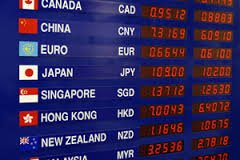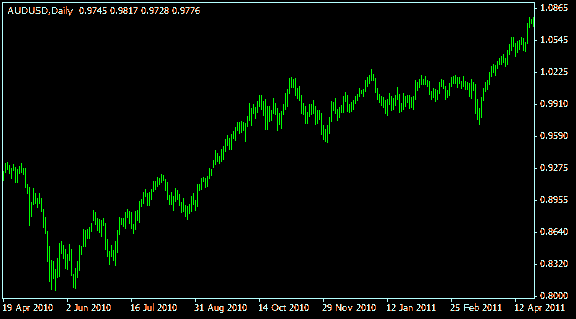What is the exchange rate?
The exchange rate, also referred to as conversion rate or foreign exchange rate is the price at which a currency of a country can be converted (“changed”) in the currency of another country.
The system of exchange rates among currencies stems from the need of foreign currency by companies and nationals. In other words, the exchange rate comes from the movement of capital, goods, services and people across borders, that is, the existence of international trade. For example, when a company sells products to a foreign country, it is natural that this company wants to get paid in their national currency; therefore, the foreign company must buy the domestic currency of the manufacturer to pay the products purchased. There are also many situations in which anyone may need a foreign currency, for example, when traveling need currency of the destination country. The result is a foreign exchange market in which people, companies and other participants buy and sell foreign currencies.
It is also regarded as the value of a country’s currency in terms of another currency. Exchange rates are determined in the foreign exchange market (Forex), which is open to a wide range of different types of buyers and sellers continuously 24 hours a day, except weekends, from 20:15 GMT on Sunday to Friday 22:00 GMT. The spot exchange rate refers to the current exchange rate. As in any other market, the exchange rate is set by the forces of supply and demand which may arise from the need for foreign exchange or speculation.
Quote of the exchange rate: the currency pair
An exchange rate is usually quoted in terms of units of one currency that can be exchanged for one unit of another currency – for example, in the form: 1.2000 EUR/USD (meaning 1 EUR = 1.2000 USD). In this example, the US dollars are known as the “quote currency” (currency of payment) and the euro is the “base currency” (transaction currency or currency unit).
The market convention establishes an order to decide what currency must be used as the base currency and which is the quote currency in an exchange rate. In most parts of the world, the order is: EUR – GBP – AUD – NZD – USD – others. For example, in the exchange rate between the euro and the Australian dollar, the EUR is the base currency, AUD is the quote currency and the exchange rate indicates the amount of Australian dollars that would be paid or received by 1 euro.
In order to determine the base currency when the two traded currencies are not on the list of market convention (ie, both are “other”), it is used as the base currency the one with a exchange rate equal or higher to 1.000. This avoids problems of rounding. There are exceptions to this rule, for example the Japanese often use the Japanese yen as base currency.
On the other hand, the exchange rate which uses the currency of the country of origin as the base currency is called indirect quote. For example, the use of 1.2000 EUR/USD in the euro area would be indirect quotation (1 EUR = 1.2000 USD).
By market convention during the period of 1980-2006 the exchange rate of most currency pairs were given with 4 decimal places for spot transactions and up to 6 decimal places for fixed term or swaps transactions. An exception to this rule were the exchange rates with a value less than 1, which were given with 5 or 6 decimal places. Although there is no fixed rule, exchange rates with a higher value than 20 were given t with 3 decimals and the exchange rates higher than 80 were given with two decimal places.
In 2005 Barclays Capital broke with this convention by offering spot exchange rates with one more decimal in its electronic trading platform, but in the beginning this change was directed towards the interbank market. This resulted in a contraction of the spread (difference between bid and ask price) and better prices for spot transactions.
In the retail foreign exchange market transactions the exchange rate of a currency pair consists of two prices, the Bid price and the Ask price, one being the price at which the broker buys and the other the price at which the broker sells. The difference is known as spread. These prices can vary from one broker to another and include the differential added by these companies through which they obtain their profit.
Learn more about the interpretation of the quoted price and the exchange rate of a currency pair here: Pips and Lots in the Forex market
Exchange rate systems
- Fixed exchange rate: It is determined and controlled rigidly by the Central Bank. Normally the value of the national currency is fixed to a currency or basket of foreign currencies.
- Flexible or floating exchange rate: the value of the currency is determined by supply and demand in the currency market.
Fluctuations in the exchange rate
The exchange rate determined by supply and demand in the currency market fluctuates regularly. A currency will have more value when demand exceeds supply and, conversely, a currency will depreciate when demand falls below the offer.
The growing demand for currency may be due to various reasons from an increase in monetary transactions of a purely speculative demand. Transactions demand is highly correlated with the level of commercial activity in a country, with its gross domestic product (GDP) and employment levels. The more unemployed in the country, the lower the spending on goods and services, both domestic and import. Central banks often have little difficulty adjusting the money supply available to accommodate changes in the demand for money due to commercial transactions.
Speculative demand is much harder to accommodate for central banks. Changes in the interbank interest rates is one of the tools used by central banks to influence the demand of currency for speculative purposes since a speculator will buy a currency if the expected return (the interest rate) is enough high. In general, the higher the interest rates in a country, the greater the demand for its currency. It has been argued that such speculation can undermine real economic growth since large currency speculators may deliberately create downward pressure on the currency in order to push the central bank to sell its currency to keep it stable and, thus, the speculator can buy the currency at a lower price.
Exchange rate based on the term of liquidation
The purchasing power of a currency
Exchange rate models
- The Theory of the Balance of Payments (BOP)
- The Purchasing Power Parity (PPP)
- The Interest Rate Parity
- The Monetary Model
- The Real Interest Rate Differential Model
- The Asset Market Model.
- The Currency Substitution model.
Intervention and manipulation of exchange rates
Countries can gain an advantage in international trade if they manipulate the value of its currency artificially influencing the exchange rate. Usually these interventions are carried out through participation in the open market of the country’s monetary authorities (central banks).
Some countries try to devalue their currency or slow its appreciation in order to promote exports and strengthen the economy. A low exchange rate makes domestic goods and services cheaper for foreigners and therefore favors exports and, conversely, for domestic consumers the products and imported goods become more expensive.
It is argued that the People’s Republic of China has succeeded in doing this for a long time. However, in a real world situation, the Yuan has appreciated by 22% in 2005 and this was followed by an increase of 38.7% on Chinese imports to the United States.




